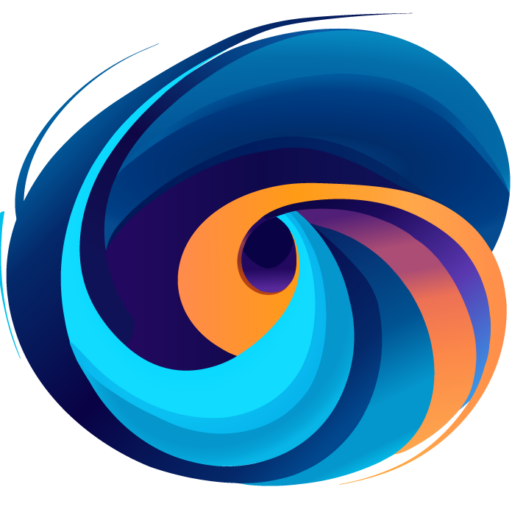NumPEx Highlighted in GENCI's 2023 Annual Report
In the field of research and innovation, GENCI is a key player in the landscape of high-performance computing (HPC) in France. Established in 2007, its mission is to provide the French scientific community with some of the most powerful HPC resources in the world, including the supercomputers Jean Zay, Joliot Curie, and Adastra. These resources enable scientists to perform complex numerical simulations and analyze massive volumes of data, which are crucial for advancements in various fields such as climatology, particle physics, biology, and much more.
Recently, GENCI published its 2023 activity report, and one of the highlights of the year was the launch of NumPEx!
Find NumPEx on page 20 of the 2023 activity report of GENCI.
2023 – Annual Report GENCI (english version)
2023 – Rapport d’activité GENCI (french version)
© Cyril FRESILLON / IDRIS / CNRS Images
2024 InPEx Workshop
Find all the presentation on InPEx website here
The Barcelona Supercomputing Center and NumPEx were thrilled to gather the InPEx community in Sitges, Spain. From June 17th to June 19th, the workshop brought together around 100 HPC experts from Europe, Japan, and the United States.
This event was the perfect opportunity to discuss about the state of the art, projects and program for Exascale and post-Exascale, to present the lastest achievements of the InPEx working groups since the 2023 Workshop, and to work together about the next steps of InPEx.
If you want to know more, all presentations are available on InPEx website.
Photo credit: Corentin Lefevre/Neovia Innovation/Inria
NumPEx Launches into Action with an Ambitious Kick-Off Agenda in Perros-Guirrec
In a series of dynamic sessions hosted from June 26th to 28th in the charming town of Perros-Guirrec, NumPEx embarked on an intensive kick-off event, setting the stage for a transformative journey in Exascale computing. Leaders, experts, and collaborators convened to delve into an agenda rich with insights,workshops, and collaborative initiatives.

The kick-off began with a comprehensive introduction, outlining the objectives and significance of the NumPEx program, aiming to establish a common vision and foster collaboration to implement a coherent software stack and related processes by 2025, benefiting not only France but also Europe, in preparation for the Exascale machine. Key figures such as Jerome Bobin, Michel Dayde, and Jean-Yves Berthou elaborated on the program's goals and organizational structure. Board members shared their perspectives on the Exascale vision and roadmaps:
GENCI's Exascale Vision and Roadmap:
- Presentation of GENCI's role and missions, including hosting the Exascale project for EuroHPC.
- European HPC initiative partnership with EuroHPC and others, leveraging PRACE and GEANT.
- Introduction of the Jules Verne consortium, highlighting international and industrial partnerships.
- Vision of the European Exascale machine: addressing societal challenges, fostering innovation, and emphasizing HPC/IA data-centric convergence.
- Collaboration plans with NumPEx, including building a functional program, benchmark development, and product promotion.
Eviden Exascale Vision and Roadmap:
- Eviden's complex approach involving HPC, HPDA, IA, and quantum technologies with a focus on sovereign and European components.
- Involvement in the European integrated processor for Exascale machines (SiPearl) and collaborations with various technology projects.
- Collaboration with CEPP for application support and participation in technology projects related to Exascale, quantum, cloud, and more.
National and European Ecosystem:
- Introduction of EUPEX, a 4-year project with a budget similar to NumPEx, aiming to deploy a modular Exascale system using the OpenSequana architecture.
- Collaboration with NumPEx, potential for shared experiments and results, and exploration of common dissemination.
- Presentation of Data Direct Network (DDN) with a focus on AI and Lustre parallel file system, highlighting challenges and the importance of understanding NumPEx applications.
The afternoon continued with a tour of the five projects (PCs) within the NumPEx program:
- Exa-MA, which aims to design scalable algorithms and numerical methods for forthcoming exascale machines. Led by Christophe Prudhomme (Université de Strasbourg) and Helene Barucq (Inria).
- Exa-Soft, to develop a coherent, portable, efficient, and resilient software stack for exascale. Led by Raymond Namyst (Inria) and Alfredo Buttari (CNRS - Centre national de la recherche scientifique).
- Exa-DoST, to overcome challenges relating to data, notably storage, I/O, in situ processing, and smart analytics, in exascale supercomputers. Led by Gabriel Antoniu (Inria) and Julien Bigot (CEA).
- Exa-ATOW, to deal with large-scale workflows involving exascale machines. Led by François Bodin (Université de Rennes), Mark Asch (Université de Picardie Jules Verne (UPJV)), and Thierry Deutsch (CEA).
- Exa-DI, to ensure transverse co-design and software productivity for exascale supercomputers. Led by Jean-Pierre Vilotte (CNRS) and Valérie Brenner (CEA).
The day concluded with an emphasis on the collaborative efforts between NumPEx and other initiatives, with a focus on benchmark development, software-hardware links, and the overall goal of preparing for the challenges of the Exascale era.
The second day kicked off with an invigorating early morning jog along the seashore, setting a vibrant tone for a day filled with thematic workshops. Participants engaged in focused discussions on energy synergies, GPU integration, applications, co-design, gender/diversity/equity, software production integration, training, resilience, international collaborations, and artificial intelligence. Thematic workshops, led by domain experts, fostered collaboration within smaller groups, emphasizing the program's commitment to a transverse approach to Exascale challenges.
The final day commenced with a synthesis of workshop outcomes, highlighting the depth of discussions within each thematic area. Workshop leaders consolidated insights, offering a panoramic view of challenges and opportunities. Here is an overview of the key insights and strategic actions discussed during these workshops:
GPU Accelerators Workshop
In a dedicated workshop on GPU Accelerators, experts emphasized the pivotal role of Graphics Processing Units (GPUs) in achieving exascale computing. With 90-99% of large machine performance attributed to GPU acceleration, the workshop highlighted the need for applications to explore the potential of these powerful processors. Challenges discussed included new programming paradigms, code portability, data management, and the hardware landscape driven by gaming and artificial intelligence. The workshop outlined a comprehensive plan, including future workshops, analysis papers, tutorials, hackathons, and examples of successfully ported mini-apps.
Energy Workshop
The Energy Workshop focused on achieving Exascale computing within a power consumption limit of 20MW. Experts delved into environmental, scientific, technical, and societal dimensions, providing a roadmap for the HPC community. Key challenges identified included modeling system consumption, real-time measurement tools, resource prioritization based on societal impact, and the broader environmental impact of research activities. The action plan involves developing a performance and consumption model, optimization strategies, tools for users, and fostering links with external entities to incorporate energy considerations.
Gender Equity and Diversity Seminar
The action plan includes the establishment of a Code of Conduct, assessment of gender distribution, creation of a web platform for resources, education and training initiatives, awareness and outreach programs, and dedication to accessibility and recognition. NumPEx aims to create an inclusive and collaborative future, inviting all stakeholders to contribute to the initiatives.
AI Workshop
The AI Workshop explored the critical intersection of HPC and AI, addressing challenges and outlining a strategic plan for collaborative exploration. Key discussions included decision support tools for AI applications in HPC, optimizing runtimes for AI models, and converging HPC and AI usages. The action plan involves establishing an AI Working Group, conducting transversal workshops, and developing fundamental building blocks for a convergent future.
Training Strategies Workshop
The Training Strategies Workshop addressed the complexities of training in the context of the impending exascale era. Discussions included the scope and subjects of training programs, the creation of sustainable training models, and economic considerations in training initiatives. The workshop emphasized collaborative and inclusive training initiatives to prepare the scientific community for the challenges and opportunities of exascale computing.
International Collaborations Workshop
The International Collaborations Workshop focused on identifying challenges and setting objectives for enhanced collaborative frameworks on a European and global scale. Discussions covered scientific and technological challenges, the design and development of the exascale software stack, and strategic action plans. The outlined roadmap includes hosting workshops, exchanging insights and experiences, and strengthening collaborations with international entities.
National Centers Integration Workshop
The National Centers Integration Workshop aimed to align NumPEx with HPC infrastructures, emphasizing operational elements between computing centers and NumPEx 's targeted projects. Discussions covered operational assessment, cybersecurity, job profiling, and traceability. The workshop set a plan for regular video conferences, ensuring ongoing communication and collaboration.
Software Production Workshop
The Software Production Workshop focused on streamlining software development practices in the HPC domain. Challenges discussed included bridging silos, enforcing good practices, and amplifying impact. Insights and conclusions highlighted diverse development practices, sustainability models, and the deployment of continuous integration and certification. NumPEx 's commitment to advancing software production practices aims to foster innovation, collaboration, and sustainable development in HPC.
Exascale Resilience Workshop
The Exascale Resilience Workshop navigated complexities associated with exascale application deployment. Discussions covered diverse approaches across NumPEx PCs, key challenges, and strategic choices. The action plan involves listing and analyzing application needs, analyzing barriers to library adoption, and scrutinizing international solutions. NumPEx aims to foster collaborative solutions for enhanced application resilience at a global scale.
Applications and Co-Design Workshop
The Applications and Co-Design Workshop promoted co-development strategies for advanced application development. Discussions included challenges in co-design, key questions for collective exploration, building connections, and initiatives for sustainability. The workshop set the stage for upcoming co-development project workshops, emphasizing collaboration and innovation.
As the leaders bid farewell to Perros-Guirrec, NumPEx looks ahead to transforming shared visions and insights into tangible actions in the realm of Exascale computing. The kick-off marked the initiation of a collaborative journey, and NumPEx is poised to lead the charge in scientific innovation.
For the latest updates and progress on the NumPEx program, stay tuned to our news section. The journey to Exascale has begun, and NumPEx is at the forefront of this pioneering expedition.
What is exascale ?
In today’s world, information has become an essential resource. Massive amounts of data are produced every day, from various sources such as social networks, sensors, scientific simulations, and many more. To efficiently process this data and meet the complex challenges of our time, it is crucial to have powerful computing capabilities.
This is where exascale comes in. Exascale is a measure of computing power that represents one trillion (10^18) floating point operations per second, or one million billion calculations per second. This performance is simply astounding and far exceeds that of all existing supercomputers.
Discover the exascale: The computing power of the future

The race to exascale :
Since the first electronic computers, the computing power of machines has grown exponentially thanks to the advancement of technologies. As computational demands grew more complex, researchers and engineers set themselves the goal of achieving exascale. This has given rise to a veritable race for innovation in the field of supercomputers.
Technological challenges :
Achieving exascale is not just about increasing the speed of processors. This requires a multidimensional approach that integrates several research areas. One of the main challenges is to design more energy-efficient processors capable of processing billions of calculations while minimizing power consumption.
In addition, the architecture of supercomputers must be redesigned to fully exploit the performance of processors. Parallel and distributed architectures, as well as the use of specialized processors like graphics accelerators (GPUs), play a key role in achieving exascale.
Exascale applications :
The exascale opens the way to many possibilities in various fields. In science and research, it will enable more accurate and faster simulations, enabling significant advances in fields such as medical research, meteorology, materials physics, astrophysics and many more.
Exascale is also essential for the development of artificial intelligence and machine learning. Deep learning models, which require massive amounts of data and computation, will be able to be trained much faster, enabling faster advancements in these areas.















